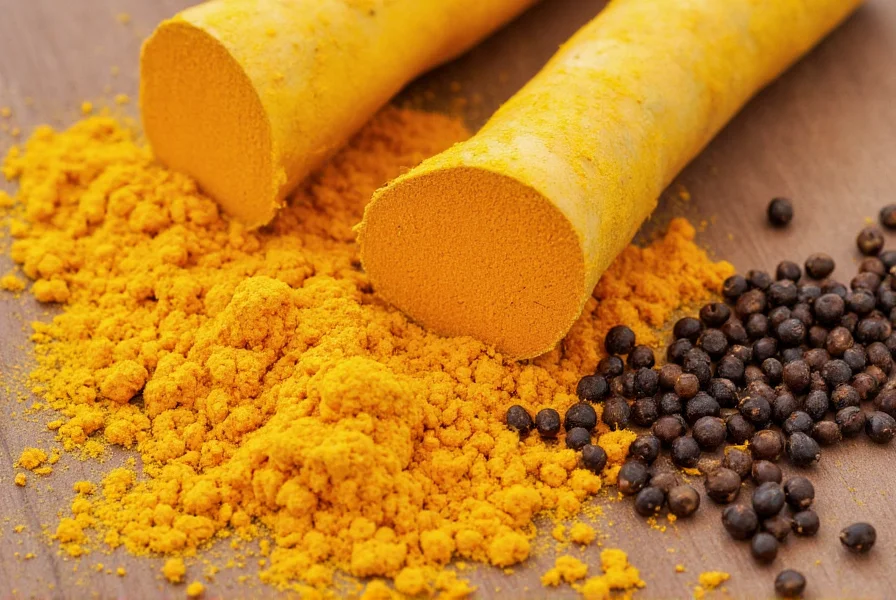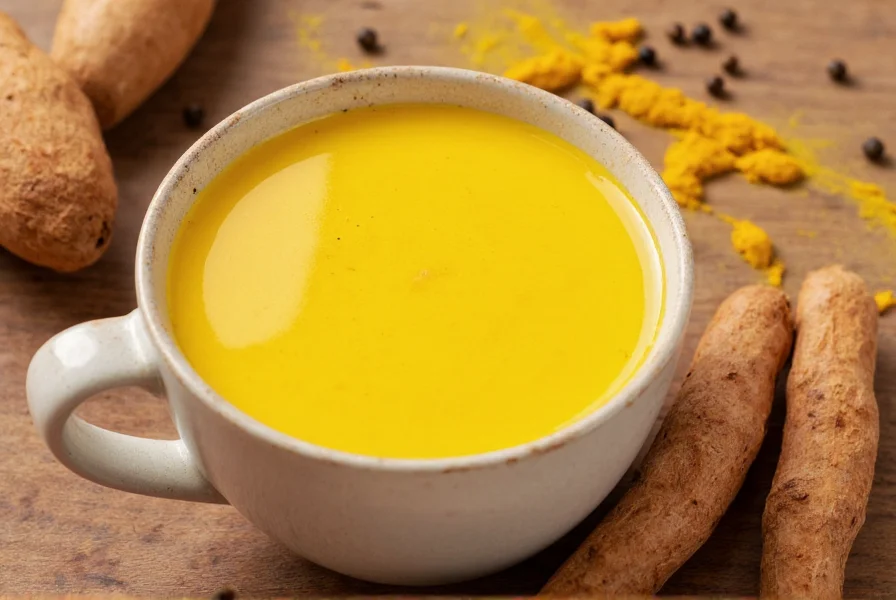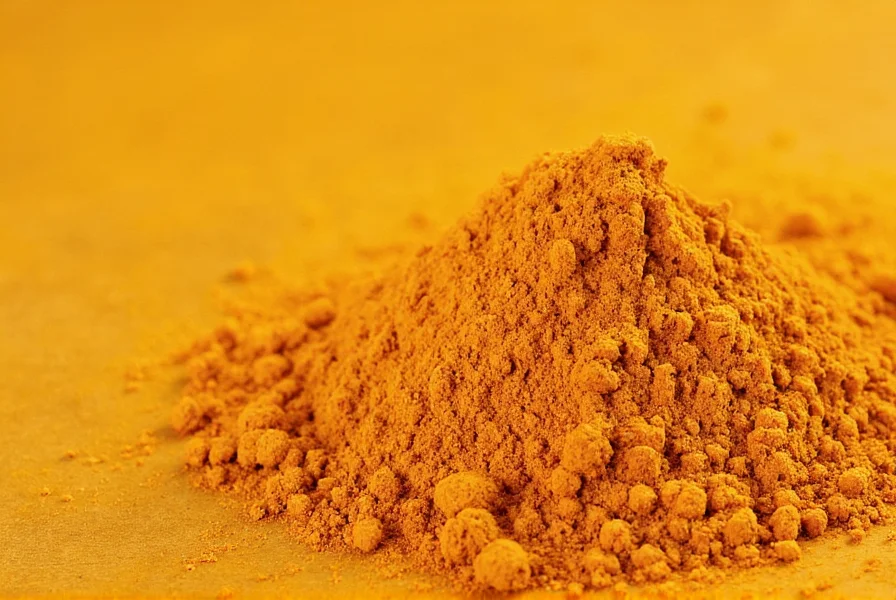For centuries, turmeric has been a cornerstone of traditional medicine systems across Asia. This vibrant yellow spice, derived from the Curcuma longa plant's rhizomes, has transitioned from ancient healing practices to modern scientific scrutiny. Today, researchers continue to investigate its potential health applications while respecting both its traditional uses and contemporary evidence.

Historical Evolution of Turmeric Research: A Scientific Timeline
Turmeric's journey from traditional remedy to evidence-based supplement spans millennia. Understanding this evolution helps contextualize current research and distinguish established benefits from emerging findings.
- Ancient Era (2000+ years ago): Documented in Ayurvedic texts (India) and Traditional Chinese Medicine for wound healing and digestive support (Source: National Center for Complementary and Integrative Health).
- 1910: Curcumin first isolated by Polish chemists, enabling modern scientific study (Source: NIH Historical Review).
- 1980: First clinical trial demonstrates anti-inflammatory effects in rheumatoid arthritis patients (Source: Deodhar SD et al., Medical Journal, Armed Forces of India).
- 2003: Research establishes curcumin's role in increasing brain-derived neurotrophic factor (BDNF) in animal models (Source: Xu Y et al., Brain Research).
- 2017: Meta-analysis confirms efficacy for osteoarthritis symptom relief with standardized dosing (Source: Daily FL et al., Journal of Medicinal Food).
The Science Behind Turmeric's Power
Curcumin represents turmeric's most studied bioactive compound, accounting for approximately 2-8% of the spice's composition. This polyphenol demonstrates remarkable biological activity, though its effectiveness faces a significant challenge: poor bioavailability. When consumed alone, curcumin struggles to be absorbed effectively by the body and is rapidly metabolized.
Scientific research has revealed a solution to this absorption challenge. Piperine, a compound found in black pepper, can increase curcumin absorption by up to 2,000%. This explains why traditional preparations often combine turmeric with black pepper—a practice now validated by modern science. Additionally, consuming turmeric with healthy fats enhances its absorption due to curcumin's fat-soluble nature.
| Health Benefit | Scientific Evidence Level | Recommended Daily Intake | Key Research Findings |
|---|---|---|---|
| Anti-inflammatory effects | Strong clinical evidence | 500-2,000 mg curcumin | Comparable to some anti-inflammatory medications in reducing inflammation markers |
| Antioxidant capacity | Well-established | 500-1,500 mg curcumin | Neutralizes free radicals and boosts body's own antioxidant enzymes |
| Joint health support | Moderate to strong evidence | 500-1,500 mg curcumin | Reduces pain and improves function in osteoarthritis patients |
| Brain health potential | Promising preliminary research | 500-1,000 mg curcumin | May increase BDNF levels and show potential for cognitive support |
Evidence-Based Health Benefits of Turmeric
Understanding the specific health benefits of turmeric requires examining the scientific evidence behind each claim. Not all purported benefits have equal research support, and distinguishing between well-established effects and promising but preliminary findings is crucial for accurate information.
Powerful Anti-Inflammatory Properties
Chronic inflammation contributes to numerous health conditions, from arthritis to heart disease. Curcumin's anti-inflammatory effects operate through multiple pathways, inhibiting key inflammatory molecules like NF-kB. A comprehensive review published in the Journal of Medicinal Food concluded that curcumin demonstrates comparable effectiveness to certain anti-inflammatory drugs, but without the same risk profile.
For individuals seeking natural approaches to reduce inflammation with turmeric, consistent daily intake appears more beneficial than occasional use. The anti-inflammatory benefits of turmeric build over time, typically requiring several weeks of regular consumption to notice effects.
Antioxidant Capacity and Cellular Protection
Oxidative stress damages cells and contributes to aging and various diseases. Curcumin functions as both a direct antioxidant and an indirect one by enhancing the body's own antioxidant enzymes. Research in the journal Oxidative Medicine and Cellular Longevity demonstrates that curcumin's antioxidant effects help protect against cellular damage while supporting the body's natural defense systems.
Joint Health and Mobility Support
Multiple clinical trials have investigated turmeric's potential for managing joint pain and arthritis symptoms. A study in the Journal of Alternative and Complementary Medicine found that participants with osteoarthritis who took curcumin experienced significant improvements in pain and physical function compared to placebo. The research suggests that turmeric's anti-inflammatory properties directly benefit joint health, potentially reducing reliance on conventional pain medications.

Brain Health and Cognitive Function
Research into turmeric's effects on brain health shows promise but remains in early stages. Curcumin may increase levels of brain-derived neurotrophic factor (BDNF), which has been linked to depression and Alzheimer's disease when deficient. However, human trials have been limited in scale and duration. A 2018 study in the American Journal of Geriatric Psychiatry (involving 40 adults) reported modest cognitive improvements, but larger and longer-term studies are needed to confirm these findings and determine optimal dosing.
Cardiovascular Health Considerations
Turmeric shows promise for supporting heart health through multiple mechanisms. Research indicates it may improve endothelial function (the lining of blood vessels), reduce inflammation, and decrease oxidation of LDL cholesterol—all factors in cardiovascular disease development. A study in Nutrition Research found that curcumin supplementation improved vascular function in postmenopausal women comparable to exercise.
Context Boundaries: Understanding Turmeric's Limitations
While turmeric offers significant health potential, its effectiveness varies based on specific conditions, individual factors, and research constraints. Recognizing these boundaries ensures realistic expectations and informed usage.
Condition-Specific Efficacy
Turmeric's anti-inflammatory benefits are most consistently documented for osteoarthritis, but evidence for rheumatoid arthritis remains limited. The National Center for Complementary and Integrative Health notes that while several studies support turmeric for osteoarthritis, research on rheumatoid arthritis is inconclusive and requires larger clinical trials (NCCIH).
Similarly, cognitive benefits observed in animal studies haven't consistently translated to humans. The National Institute on Aging states that current evidence does not support curcumin for preventing or treating Alzheimer's disease, emphasizing the need for more rigorous human studies (NIA).
Bioavailability Constraints
Despite absorption strategies, curcumin's bioavailability remains a fundamental limitation. A comprehensive NIH-funded review explains that even with piperine, curcumin blood levels peak within 1-2 hours and decline rapidly, necessitating multiple daily doses for sustained effects (Kurien BT et al., Pharmaceutics 2020).
Individual Response Variability
Genetic variations significantly impact turmeric's effectiveness. Research funded by the U.S. National Institutes of Health found that individuals with certain UGT1A1 gene variants experienced up to 50% lower curcumin blood levels, explaining inconsistent results across studies (Asai A et al., Pharmacogenomics 2014).
Practical Considerations for Turmeric Use
Understanding how to maximize turmeric absorption represents a critical factor in realizing its potential benefits. Simply adding turmeric to food provides some benefits, but strategic consumption enhances effectiveness significantly.
Optimizing Turmeric Absorption
To overcome curcumin's bioavailability challenges, consider these evidence-based approaches:
- Combine with black pepper (contains piperine)
- Consume with healthy fats (avocado, coconut oil, olive oil)
- Heat turmeric gently when cooking (enhances solubility)
- Consider phospholipid-bound curcumin supplements for better absorption
Dosage Guidelines and Safety
While turmeric is generally safe as a culinary spice, higher doses for therapeutic purposes require careful consideration. Most research uses standardized curcumin extracts providing 500-2,000 mg of curcumin daily. The World Health Organization suggests an acceptable daily intake of 0-3 mg per kilogram of body weight for curcumin.
Individuals taking blood thinners, diabetes medications, or certain chemotherapy drugs should consult healthcare providers before using turmeric supplements, as potential interactions exist. Those with gallbladder issues should also exercise caution, as turmeric may stimulate bile production.
Realistic Expectations for Turmeric Benefits
It's essential to maintain realistic expectations about turmeric's effects. While research shows promise for various health applications, turmeric is not a miracle cure. Benefits typically develop gradually with consistent use over weeks or months. Understanding what turmeric can and cannot do for health prevents disappointment and supports informed decision-making.
Incorporating Turmeric Into Your Daily Routine
Adding turmeric to your diet can be both simple and delicious. Consider these practical approaches:
- Golden milk: Warm milk (dairy or plant-based) with turmeric, cinnamon, and a pinch of black pepper
- Smoothie booster: Add 1/2 teaspoon of turmeric powder to fruit or vegetable smoothies
- Rice and grain dishes: Stir turmeric into cooked rice, quinoa, or couscous
- Roasted vegetables: Toss vegetables with olive oil and turmeric before roasting
- Homemade dressings: Blend turmeric into vinaigrettes with lemon juice and olive oil
For those seeking more concentrated benefits, high-quality curcumin supplements standardized to 95% curcuminoids and formulated with absorption enhancers represent another option. When selecting supplements, look for third-party testing verification to ensure product quality and accuracy of labeling.











 浙公网安备
33010002000092号
浙公网安备
33010002000092号 浙B2-20120091-4
浙B2-20120091-4